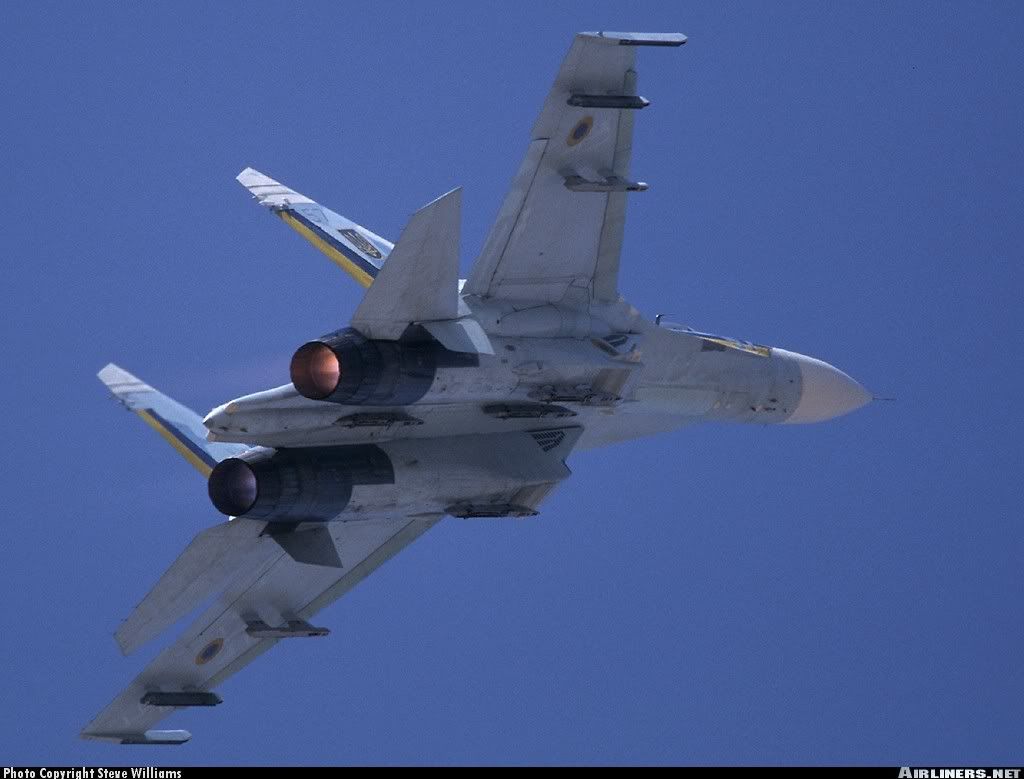Blue afterburner?
Join Date: Jun 2006
Location: Shrops
Posts: 209
Likes: 0
Received 0 Likes
on
0 Posts
The propulsive usefulness of reheat (as a measure of the increase in thrust gained through its use) is a function of the change in temperature that is achieved between the dry value and the wet value, not the amount of flame coming out of the exhaust 

Join Date: Jun 2006
Location: Shrops
Posts: 209
Likes: 0
Received 0 Likes
on
0 Posts
The fuel is actually being burned at the reheat manifold. It is the velocity of the exhaust gases that carries the flame outside of the propelling nozzle. Yes, it would probably be more efficient (in terms of heat transfer) to retain the flame inside the exhaust system, but I'm not sure its possible simply because of the way the system has to work.
Join Date: Jul 2005
Location: South West
Posts: 142
Likes: 0
Received 0 Likes
on
0 Posts
More Geek Speak
PR does have a point. Most FJ aircraft just have convergent nozzles meaning much of the expansion energy is wasted outside the engine. It would be most efficient to have a large convergent-divergent nozzle (like the main engine nozzles on the back of the shuttle) which would capture the thrust generated by the full expansion of the exhaust gases behind the aircraft. However, the drag and weight would be excessive when not in reheat (90%+ of the time). Latest generation FJ engines have (variable) con-di nozzles but even then, the limited diameter means that they still can't recover all of the expansion energy.
N Joe
N Joe
Join Date: Jul 2005
Location: South West
Posts: 142
Likes: 0
Received 0 Likes
on
0 Posts
More geek speak!
The diamonds are due to the shock-waves in the expanding supersonic exhaust flow. Gases at different pressures/temperatures have different refractive indexes so bend the light differently. Same principle as shimmer in air over hot tarmac etc, except that the changes though the shock-waves are much sharper.
N Joe
N Joe
Join Date: Nov 2005
Location: UK
Posts: 100
Likes: 0
Received 0 Likes
on
0 Posts
> at night it appears to be blue
Yes. What you're seeing is the blue flame after it's exited the engine and encountered a whole load more oxygen. It's very dim. During the day it's invisible and all you can see is the rich-mixture area inside the, er, whatever you call the adjustable nozzle.
Phil
Yes. What you're seeing is the blue flame after it's exited the engine and encountered a whole load more oxygen. It's very dim. During the day it's invisible and all you can see is the rich-mixture area inside the, er, whatever you call the adjustable nozzle.
Phil








